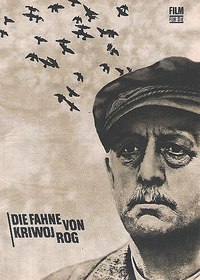Plot
Communist miner Otto Brosowski writes to the miners of Krivoi Rog, informing them about the harsh working conditions he and his friends endure due to the capitalist owners of the copper mine, who demand increasingly harder work. In response, he receives a Red Banner from them. As the Nazis seize power, Otto and his family take great personal risks to hide the flag from the authorities. In 1945, as World War II nears its end, the town is occupied by the Americans, who also attempt to steal the Banner. In July 1945, as the Americans retreat and the Red Army takes over the area, the Brosowski family takes the flag and heads to meet the Soviets.
Reception
The film was viewed by 2,772,000 people in the two months from its release until the end of 1967, with 750,000 of them in the first two weeks; that figure also included those who saw it in mandatory screenings in collective farms and schools. It became the second most watched East German film of the year, after Chingachgook, the Great Snake . [4]
Maetzig, writer Hans-Albert Pederzani, actors Erwin Geschonneck and Marga Legal and cinematographer Erich Gusko were all awarded the National Prize, 1st degree, on 3 October 1968. [5] The film also won the Cinema Award of the magazine Junge Welt. [6]
Heiko R. Blum wrote that "the overly impassioned style, the hollow words... cannot destroy the picturesque quality of this impressive film, which is modeled after the classical Soviet epics." [3] The German Film Lexicon defined The Banner of Kriwoy Rog as "an impressive, historically insightful picture that conveys its propaganda in a humane manner." [7]
This page is based on this
Wikipedia article Text is available under the
CC BY-SA 4.0 license; additional terms may apply.
Images, videos and audio are available under their respective licenses.

